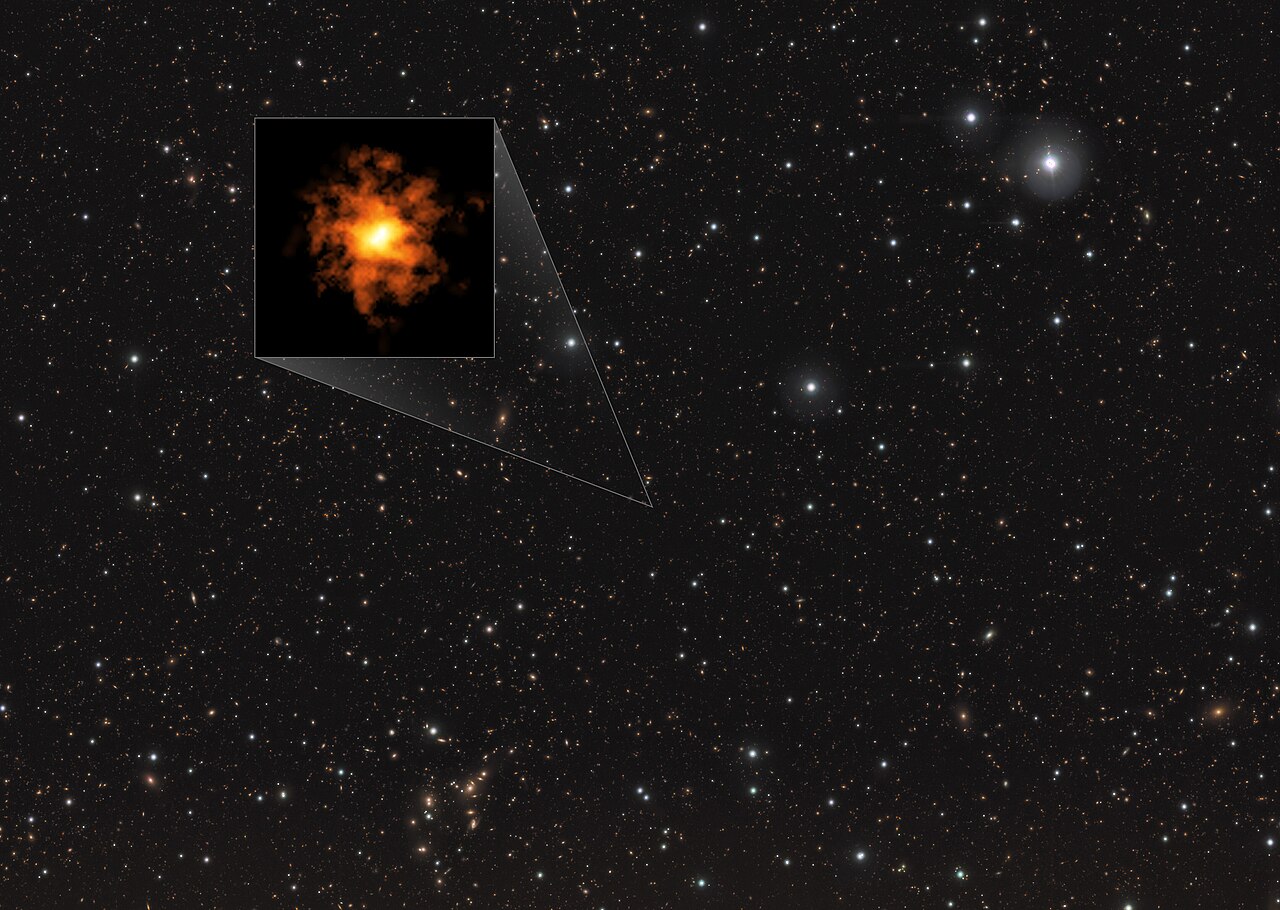Astronomers looked at what was hidden in the farthest corners of the universe, but what they saw they may not have been prepared for. Because they found the most distant rotating galaxy ever observed, which looks very similar to the Milky Way.
The object, called REBELS-25, was discovered using the Atacama Large Millimeter/submillimeter Array (ALMA), reported in the journal Monthly Notices of the Royal Astronomical Society. He studies. However, what really surprised researchers was the unusually organized structure of the galaxy, which scientists believe is the result of billions of years. Futurism. Co-author Jacqueline Hodge, an astronomer at Leiden University, said that according to current knowledge of galaxy formation, most early galaxies were small and turbulent.

The galaxy called REBELS-25. In a recent study, researchers found evidence that REBELS-25 is a highly rotating disk galaxy that existed only 700 million years after the Big Bang. This makes it the most distant and oldest Milky Way-like galaxy yet discovered. ALMA (ESO/NAOJ/NRAO)/L. Rolland et al./ESO/J. Dunlop et al. Format: CASU, CALET
The galaxy heading towards the Milky Way disproves what we know so far
However, REBELS-25 stands out because it may have formed when the universe was only 700 million years old, which is only 5% of its current age. However, it bears an uncanny resemblance to the Milky Way, which formed just 100 million years after the Big Bang, about 13.6 billion years ago. Until now, researchers thought it took 13.6 billion years to arrange itself like our extended home, when it needed only 700 million years.
According to lead author Lucy Rowland, “Seeing a galaxy so similar to the Milky Way challenges our understanding of how quickly galaxies in the early universe evolved into the organized galaxies in the universe today.” Thanks to ALMA's extremely high resolution, astronomers were able to determine the unusually regular structure and motion of REBELS-25. Based on the evidence, the galaxy has spiral arms and an elongated central ray, similar to the Milky Way.
According to Rolland, it would be an amazing discovery to find more advanced structures in it, because it is the most distant galaxy so far that has been discovered to be highly advanced. The research team now hopes to get a better picture of this object, perhaps with the help of the James Webb Space Telescope. If their theories are confirmed, it could undermine ideas about how galaxies evolve over billions of years.
Worth reading:






